Timekeeping Beyond Earth: Astronauts and Their Speedmasters
Space. Is it really the final frontier? It holds countless mysteries, from understanding our place in the universe to potentially discovering new worlds and civilizations. Humanity has always been drawn to the mysteries of the cosmos, driven by an innate curiosity to understand what lies beyond our home planet. For astronauts, venturing into the vast unknown is not just a scientific endeavor but a great proof of human ingenuity.
Among their essential tools, perhaps none is as emblematic as their watches (to me, at least). The most iconic one is none other than the Omega Speedmaster. Originally designed for professional use in high-speed motorsports, the Speedmaster found new fame when it became the first watch worn on the moon during NASA's Apollo missions.
In the unbounded expanse of space, where timekeeping took on critical importance for navigation and mission coordination, the Speedmaster's reliability and functionality were indispensable. Its chronograph feature allowed astronauts to measure precise intervals, calculate mission-critical timings, and execute complex procedures with exactitude.
Yet, beyond their functional role, these watches carry a deeper significance, connecting astronauts to a lineage of explorers who have dared to push the boundaries of what is possible and to traverse the uncharted territories of space.
Origins
It was initially designed for racing and introduced the innovative tachymeter scale on its bezel, marking a world-first achievement. This feature not only solidified the Speedmaster's status as an iconic chronograph in the ref. 2915-1, but also contributed significantly to its widespread popularity.
 Belgian F1 driver Willy Mairesse with a CK2998, circa 1959. Image: Unknown
Belgian F1 driver Willy Mairesse with a CK2998, circa 1959. Image: Unknown
The Speedmaster originated from a project aimed at developing a professional line of Omega watches. Omega's design team was tasked with creating a robust, highly precise, waterproof timepiece that was also reliable, easy to read, and user-friendly. Meeting these stringent requirements, the prototype was finalized by the end of 1956 and publicly debuted in 1957.
First Omega in Space and NASA Qualification Tests
The Speedmaster's association with NASA began in the early 1960s when NASA was searching for a reliable and durable chronograph wristwatch for its astronauts. In 1962, NASA astronaut Walter Schirra privately purchased and wore his personal CK 2998 during the Mercury-Atlas 8 mission, making it the first Omega to fly on a space mission. This only happened because Schirra, having heard about the Speedmaster's reputation, bought it for personal use.
 A Rare Grey Dial 2998, Part of Hairspring Finds. Image: Watchfid
A Rare Grey Dial 2998, Part of Hairspring Finds. Image: Watchfid
Following Schirra's initiative, in 1964, flight crew operations director Deke Slayton initiated the search for a highly durable and accurate chronograph to be utilized by Gemini and Apollo flight crews through an internal memo. Subsequently, engineer James Ragan took charge of circulating the request for quotations among a pre-selected group of watchmakers identified by Slayton. Three brands responded promptly regarding their models: the Longines-Wittnauer 235T, a Rolex chronograph reference 6238, and the Omega Speedmaster reference 105.003. Above all, the Speedmaster utilized Omega's own version of the Lemania 2310 movement, while Rolex and Longines used variations of the Valjoux 72 movement in their watches.
The same year, NASA formally tested the watches mentioned under stringent conditions outlined in their specifications. These tests included exposure to extreme temperatures and pressures as well as variations in humidity, corrosion, shock, and acceleration.
The Speedmaster eventually passed these tests successfully and, in 1965, was declared "flight-qualified by NASA for all manned space missions" after rigorous testing and evaluation. It became the official watch for astronauts, particularly for use during spacewalks or extravehicular activities (EVAs).
This marked the beginning of Omega's enduring association with space missions, showcasing the watch's robust performance in zero-gravity and extreme conditions. While initially a personal preference, Schirra's use of the Speedmaster highlighted its suitability for space exploration, eventually leading to its formal qualification by NASA for all manned missions and its iconic status as the Moonwatch during the Apollo lunar missions.
NASA tests for flight qualifications:
1. High temperature test: 70°C for 48 hours, then 93°C for 30 minutes in a partial vacuum
2. Low temperature test: -18°C for 4 hours
3. Vacuum test: Heated in a vacuum chamber and then cooled to -18°C for several cycles
4. Humidity test: Ten 24-hour cycles in >95% humidity with temperatures ranging from 25°C to 70°C
5. Corrosion test: In an atmosphere of oxygen at 70°C for 48 hours
6. Shock resistant test: Six 40 G-shocks in six different directions
7. Acceleration test: Progressive acceleration to 7.25 G for about 5 minutes then to 16 G for 30 second in three axes
8. Low pressure test: Pressure of 10-6 atmospheres at 70°C for 90 minutes, then at 93°C for 30 minutes
9. High pressure test: In an air pressure of 1.6 atmospheres for 60 minutes
10. Vibration test: Random vibrations in three axes between 5 and 2,000HZ with acceleration at 8.8g
11. Sound test: 130 decibels at frequencies from 40 to 10,000HZ for 30 minutes
 James Ragan putting the Speedmaster through stringent tests. Image: NASA
James Ragan putting the Speedmaster through stringent tests. Image: NASA
'Houston, Tranquility Base here. The Eagle has landed.'
On July 21, 1969 at 02:56 GMT, about four and a half years after the initial tests, the first watch to be worn on the moon was the reference ST105.012. This historic event took place during NASA's Apollo 11 mission on July 20, 1969. Buzz Aldrin, the lunar module pilot, wore this iconic watch as he descended from the lunar module Eagle and became the second human to set foot on the lunar surface, following Commander Neil Armstrong. Aldrin's Speedmaster was strapped over his spacesuit, its chronograph function proving invaluable for timing various mission-critical tasks, including lunar module descent and rendezvous operations. Armstrong left his own Speedmaster inside the lunar module as a backup timer; he wore a Bulova at that time. This moment not only marked a monumental achievement in human history but also solidified the Speedmaster’s legacy as the Moonwatch, forever associating it with mankind's first steps on another celestial body.
 Neil Armstrong’s actual 105.012. Image: NASM/Smithsonian
Neil Armstrong’s actual 105.012. Image: NASM/Smithsonian
For years, enthusiasts posed questions about the Speedmaster references worn by Aldrin and Armstrong. Armstrong’s Speedmaster was indeed identified as a ST105.012 with the serial number 24002981 - case closed. However, Aldrin’s Speedy remains a mystery to this day, as it appears to have been lost some time in the 1970s. Speculation suggests that the lost watch was a ST105.012, but some sources say it was a ST145.012.
So, what really happened to Aldrin’s watch? Following standard protocol, upon his return to Earth, Aldrin sent his watch to the Smithsonian Museum in Washington for display. However, it was 'lost' during the process. This disappearance has fueled many conspiracy theories, hoaxes, and rumors over the years as to the watch’s whereabouts, with one unsubstantiated claim suggesting that Jeff Bezos, a noted collector of space memorabilia, acquired Aldrin's lost Speedmaster. These stories, although widely circulated, lack concrete evidence and should probably be regarded with skepticism. (Author’s note: Unless...?)
 Buzz Aldrin wearing his Speedmaster during the Apollo 11 mission in 1969. Image: NASA
Buzz Aldrin wearing his Speedmaster during the Apollo 11 mission in 1969. Image: NASA
Fast-forward to the late 20th century: NASA began considering alternatives to the traditional Speedmaster Professional as part of its efforts to modernize astronaut equipment. The switch from the Moonwatch to the X-33 occurred gradually, with the X-33 being formally introduced and tested for spaceflight readiness in the early 2000s. The X-33, known as the "Mars Watch," was specifically designed to meet the evolving needs of astronauts in the space shuttle era and beyond, offering digital functionalities and improved durability suited for modern space missions. While the Moonwatch retains its iconic status, the X-33 represented NASA's adaptation to new technological capabilities and mission requirements in the 21st century.
While the Speedmaster is famous for its technical qualities, it’s obviously also historically linked to notable individuals who have worn this on space voyages. As a part of the history of the Speedmaster, zooming in on the references worn by several astronauts and pilots allows us to see the breadth of missions that this watch has been a part of. Now that we’ve covered the basics, let’s take a look at the Speedmasters that the astronauts wore.
 Tropical 105.012 Delivered to South Africa. Part of Hairspring Exclusives
Tropical 105.012 Delivered to South Africa. Part of Hairspring Exclusives
Walter Schirra & Leroy “Gordo” Cooper: CK2998-4
 Schirra during Sigma 7 with his 2998. Image: NASA
Schirra during Sigma 7 with his 2998. Image: NASA
Walter Schirra, one of NASA's original seven astronauts and a veteran of the Mercury, Gemini, and Apollo programs, played a crucial role in the early days of American space exploration. Among his many accomplishments, Schirra holds a unique place in horological history as the first astronaut to wear the Speedmaster in space.
During NASA's Sigma 7 mission of the Mercury program in October 1962, Schirra strapped the CK2998-4 he bought for himself to his wrist. This mission marked a significant milestone, as it was the first time a wristwatch was worn in the harsh conditions of outer space. The CK2998-4 accompanied Schirra on subsequent missions, including Gemini 6A in December 1965. During this mission, the Speedmaster demonstrated its crucial role in space exploration when Schirra used it to time the critical engine burns necessary for orbital maneuvers and rendezvous with Gemini 7.
Leroy Gordon "Gordo" Cooper Jr., another member of NASA's original Mercury Seven astronauts, notably took his CK2998 into orbit during his historic Mercury-Atlas 9 mission, known as Faith 7, launched on May 15, 1963. Cooper's choice of the Speedmaster marked the watch's debut in space, demonstrating its reliability and precision during his nearly 34-hour solo flight, which orbited Earth 22 times.
 Cooper preparing for his Mercury-Atlas mission with his 2998. Image: NASA
Cooper preparing for his Mercury-Atlas mission with his 2998. Image: NASA
The CK2998 builds upon the legacy of the CK2915, the inaugural Speedmaster reference. Launched in 1959, the CK2998 introduced updates like a black bezel and Alpha hands, departing from the Broad Arrow hands of its predecessor. The CK2998-4, produced from 1961 to 1962, featured variations such as different hands and bezel styles. It retained Alpha hands for hours and minutes, alongside white baton hands for smaller functions. This dial design was also adopted by subsequent CK2998 models—CK2998-3, CK2998-5, CK2998-6, CK2998-61, and CK2998-62—incorporating applied Omega logos, stepped subdials, and the "Swiss Made" marking below the minute track. A distinctive feature is the long "R" in "Speedmaster" on some of these dials, setting them apart within the Speedmaster lineage.
Ed White & Gus Grissom: 105.003
Virgil "Gus" Grissom, one of the original Mercury Seven astronauts, was the second American to fly in space aboard Liberty Bell 7 in 1961. During this historic mission, Grissom wore a standard-issue Speedmaster, marking it as one of the earliest instances of the Speedmaster being used in space by NASA astronauts. Unfortunately, upon splashdown, the spacecraft's hatch unexpectedly blew open prematurely, causing it to sink. This incident led to the loss of the spacecraft and Grissom's Speedmaster, which remained underwater until its recovery decades later in 1999.
 Ed white wearing two 105.003 on his left wrist. Image: NASA
Ed white wearing two 105.003 on his left wrist. Image: NASA
Another astronaut selected as one of the original seven astronauts for NASA's Mercury program in 1959 was Ed White, whose most notable achievement came during the Gemini 4 mission on June 3, 1965, when he became the first American astronaut to perform a spacewalk (or EVA). During this historic spacewalk, White floated outside the Gemini capsule attached to a 25-foot umbilical cord, maneuvering freely in the microgravity of space for approximately 23 minutes. His actions demonstrated that astronauts could work effectively outside their spacecraft, a critical milestone in NASA's preparations for future Moon missions.
White's spacewalk was not only a technical achievement but also a cultural moment that captured the world's imagination and solidified his place in history as a trailblazer in space exploration. Ed White's historic spacewalk during the Gemini 4 mission occurred while he was wearing a Speedmaster strapped to his spacesuit, making the Speedmaster the first watch to be worn in spacewalk conditions. Tragically, Ed White lost his life on January 27, 1967, along with fellow astronauts Gus Grissom and Roger B. Chaffee, during a pre-launch test for the Apollo 1 mission.
 A well-preserved 105.003 today. Image: Bazamu
A well-preserved 105.003 today. Image: Bazamu
The 105.003 is often regarded as the third generation of Speedmasters, though there was a transitional 105.002 model between it and the earlier CK2998. The 105.003 introduced notable changes, including the adoption of white baton hands instead of the previous Alpha hands, making it easier to read. This model marked a significant update as Omega revamped its reference numbering system. The 105.003 gained prominence as the model extensively tested and eventually qualified by NASA, as evidenced by the engraving "FLIGHT QUALIFIED FOR ALL MANNED SPACE MISSIONS" on later references' case backs. This reference also stands out as the final model in the Speedmaster "Pre-Professional" series, and consequently, the last to feature straight lugs.
Charles Conrad: 105.012
 Conrad wearing a Glycine Airman on his right wrist and a 105.012 on his left. Image: NASA
Conrad wearing a Glycine Airman on his right wrist and a 105.012 on his left. Image: NASA
November 14th 1969. Apollo 12 undertook NASA's second journey to the moon. The crew included Commander Charles "Pete" Conrad Jr., Command Module Pilot Richard "Dick" Gordon, and Lunar Module Pilot Alan L. Bean. Conrad navigated his crew while conducting scientific experiments on the lunar surface through diverse challenges, including a precise landing near the Surveyor 3.
This reference, 105.012, was launched in 1964 and produced until 1968 and is renowned as the first true Moonwatch and the one famously worn by Neil Armstrong and Buzz Aldrin during the Apollo XI mission in 1969. This model introduced several design changes that defined the modern Speedmaster's iconic look. Key updates included the addition of protective guards for the pushers and crown, the transition from straight to faceted lugs (known as 'Lyre Lugs'), and an increase in case size to 42mm.
 'ACP' Dial 105.012. Image: Phillips
'ACP' Dial 105.012. Image: Phillips
The 105.012 was also the first reference to feature the ‘Professional’ inscription on the dial. Although it was previously believed that this inscription was added in July 1965 following NASA’s certification of the Speedmaster, Omega confirms (kind of) that the ‘Professional’ label was included from the start of production in early 1964, as seen on the models made specifically for the watches ordered specially for Automovil Club Peruano (ACP). Other than that, this reference saw the introduction of the 'T' marks on either side of ‘SWISS MADE’, beginning in April 1964, though the ACP example lacks these.
Alan Shepard: 145.012
 Alan Shepard and his 145.012 being suited up for Apollo 14. Image: NASA
Alan Shepard and his 145.012 being suited up for Apollo 14. Image: NASA
Alan Shepard, a prominent American astronaut and naval aviator, made history by becoming the first American to travel into space on May 5, 1961, aboard the Mercury-Redstone 3 mission, known as Freedom 7. His suborbital flight lasted approximately 15 minutes, reaching an altitude of 116 miles (187 kilometers) above Earth. Shepard's achievements extended to commanding the Apollo 14 mission in 1971, during which he became the fifth person to walk on the Moon. During this mission, he famously swung two Victor Daisy balls on the lunar surface, marking the first and only instance of golf being played on the Moon.
 145.012. Image: Bulang & Sons
145.012. Image: Bulang & Sons
During Apollo 14, the third mission to land astronauts on the Moon, Shepard wore the 145.012. This model was produced from 1967 to 1969 and featured a redesigned pusher arrangement. Unlike its predecessors, the 145.012 had pushers that were screwed into the case with slightly larger caps. It was also the final model to house the column-wheel chronograph cal. 321 movement.
Deke Slayton: ‘Apollo XI 1969’ BA 145.022
 Deke Slayton’s official NASA photo featuring the BA 145.022, sans bezel. Image: NASA
Deke Slayton’s official NASA photo featuring the BA 145.022, sans bezel. Image: NASA
Donald “Deke” Slayton, another member of the original astronauts selected for NASA’s early programs, played a pivotal role in shaping NASA's early missions and fostering international cooperation in space. One of his notable contributions was for the Apollo-Soyuz Test Project (ASTP), a groundbreaking mission that marked the first joint spaceflight between the United States and the Soviet Union.
The Apollo-Soyuz mission, launched in July 1975, represented a significant thawing of Cold War tensions in space exploration. Slayton was chosen as the Docking Module Pilot, responsible for coordinating the docking of the Apollo spacecraft with the Soviet Soyuz spacecraft in Earth orbit. This historic mission demonstrated that the United States and the Soviet Union could work together in space, setting the stage for future international collaborations such as the International Space Station.
Slayton wore a standard issue cal. 321 (possibly 145.012) for the Apollo-Soyuz mission. However, the watch that stood out more was his bezel-less Gold Apollo XI tribute BA145.022. After the achievement of the Apollo 11 mission, Omega came out with a special Speedmaster with its case, bracelet, and dial in solid 18k gold. The numbered series of 1,014 watches was made as a tribute to the NASA astronauts and relevant individuals invovled. This was also the first numbered Speedmaster. Slayton’s was #27.
One thing to note on this reference is its distinctive solid gold dial, identified by the "OM" near "Swiss Made," indicating "or massif" or solid gold. The hour markers, made from onyx, feature two facets each and are encased in gold frames. The hands, black with gold centers, provide a striking contrast against the solid gold dial. The step dial is available in two variations: the first resembles the dials of the original CK2915 references, featuring an oval "O" in Omega, though the second version is similar to the standard 145.022-69 dial, where the "S" in Speedmaster does not connect with the "P", is of moderate height, and has a slight opening at the top. The case back for the watches given to astronauts were inscribed with the lines, "To mark man's conquest of space with time, through time, on time" along with their name, the mission they accomplished, and the allocated number at the bottom. Since these are variations of the 145.022, they’re powered by the cal. 861.
 BA 145.022, Part of Hairspring Finds. Image: Isringtime
BA 145.022, Part of Hairspring Finds. Image: Isringtime
What separates this from the standard Speedmaster Professional is the gold case featuring a burgundy red aluminum inlay, including the ‘dot over ninety’ marker, though in Slayton’s official NASA photo, the bezel is not present for reasons unknown!
Karen Nyberg, Sunita Williams, Chris Hadfield, Most SpaceX Astronauts, and Many Others: X-33
Karen Nyberg, Sunita Williams, and Chris Hadfield are renowned astronauts in recent times who have each made significant contributions to space exploration. Karen Nyberg, a former NASA astronaut, flew on missions including STS-124 aboard the Space Shuttle Discovery and Expedition 36/37 on the International Space Station (ISS). Sunita Williams has participated in multiple long-duration missions aboard the ISS, setting records for female spacewalks and serving as a flight engineer. Meanwhile, Canadian astronaut Chris Hadfield is notable for his role as the commander of the International Space Station (ISS) during Expedition 35 in 2013, marking the first time a Canadian had commanded the ISS. Hadfield's tenure included conducting numerous spacewalks for critical maintenance and scientific experiments.
 Left to Right: Karen Nyberg, Sunita Williams, & Chris Hadfield with their X-33s. Image credit: Unknown
Left to Right: Karen Nyberg, Sunita Williams, & Chris Hadfield with their X-33s. Image credit: Unknown
The Speedmaster X-33 continues to be utilized by NASA and other space agencies for in-flight mission requirements and remains one of the four approved watch models issued by NASA for mission use. Alongside the original Speedmaster Professional, a Casio G-shock, and a Timex Datalink, the X-33 stands out due to its unique "Mission Time" feature, which astronauts favor for logging and scheduling tasks according to launch time. However, the mechanical Speedmaster Professional remains the sole authorized watch for use during spacewalks.
 Russian Cosmonaut Elena Serova about to leave for the ISS in 2014 with an X-33 on the right arm and mechanical Speedmaster Professional on the left, just in case. Image: NASA
Russian Cosmonaut Elena Serova about to leave for the ISS in 2014 with an X-33 on the right arm and mechanical Speedmaster Professional on the left, just in case. Image: NASA
The feature Mission Time Mode enables astronauts to synchronize tasks according to mission elapsed time (MET), crucial for mission coordination. The watch also displays multiple time zones simultaneously, aiding in global communications and scheduling. Equipped with a programmable countdown timer and chronograph function, it supports precise timing for experiments and activities during spacewalks. An alarm function provides alerts for scheduled tasks or emergencies, while a backlight ensures visibility in low-light conditions within spacecraft. It also features a programmable countdown timer and chronograph function to ensure precise timing for experiments and activities during spacewalks. On top of that, an alarm function alerts astronauts to scheduled tasks or emergencies, and a backlight ensures visibility in low-light conditions inside spacecraft.
In space, the X-33 is predominantly seen worn on a black Kevlar strap, although the titanium bracelet is also occasionally used. It is rarely observed on a one-piece white Velcro strap, similar to (or possibly the same as) those used with spacesuits. NASA astronauts are issued the watch and often wear it on the ground as well, familiarizing themselves with its interface and functions. This practice mirrors that of Apollo program astronauts in the 1960s and '70s, who wore their NASA-issued Speedmaster Professionals on Earth to ensure readiness for mission tasks.
Blue Origin Crew: 310.30.42.50.01.001
 Bezos and his Blue Origin NS-16 crew wearing their Speedmasters. Image credit: Associated Press.
Bezos and his Blue Origin NS-16 crew wearing their Speedmasters. Image credit: Associated Press.
Space exploration was once the domain of governmental agencies. However, with the ventures of Richard Branson’s Virgin Galactic and Jeff Bezos’s Blue Origin, the prospect of flying into space, even briefly, is becoming a tangible reality—albeit not yet widely accessible. On July 20th, 2021, Blue Origin's NS-16 mission marked a milestone as the company's first crewed flight, launching 4 individuals into space aboard the New Shepard (named after Alan Shepard) spacecraft. Among them were Jeff Bezos, the founder of Amazon and Blue Origin, his brother Mark, Dutch student Oliver Daemen, and former NASA pilot Wally Funk, who was also a candidate of the Mercury 13 program. Remarkably, Daemen became the youngest person to journey into space, while Funk became the oldest.
The watches used for this flight were customized versions of the new Speedmaster Moonwatch Master Chronometer with Hesalite crystal, with the reference number 310.30.42.50.01.001, and powered by the cal. 3861. According to Hodinkee, these watches featured casebacks engraved with the wearer’s name, flight number, and Blue Origin’s feather insignia, generously donated by Omega. What stands out about this watch was that crew members of Blue Origin NS-16 wore their Speedmasters on newly introduced Omega Velcro straps made from silver textile. These straps were specially tailored for the event, marked with the Speedmaster logo in blue and the Blue Origin logo. This event truly heralds the advent of space tourism.
To Infinity and Beyond?
As we look to the future with renewed ambitions for commercial space travel, Mars missions and beyond, the Speedmaster remains a symbol of our enduring commitment to exploration. Its legacy is a reminder that with the right tools, no frontier is too distant, no challenge insurmountable.








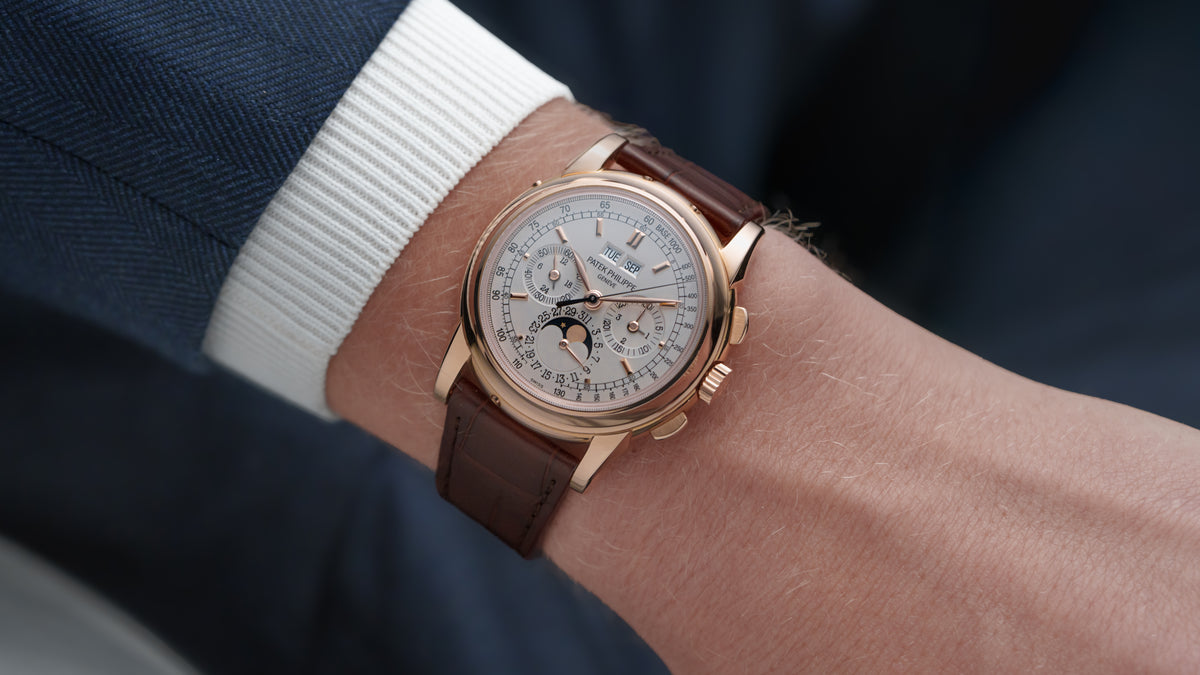
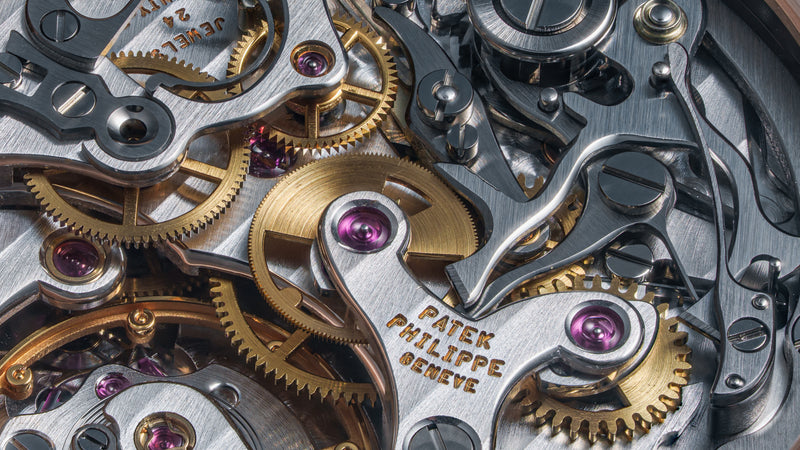


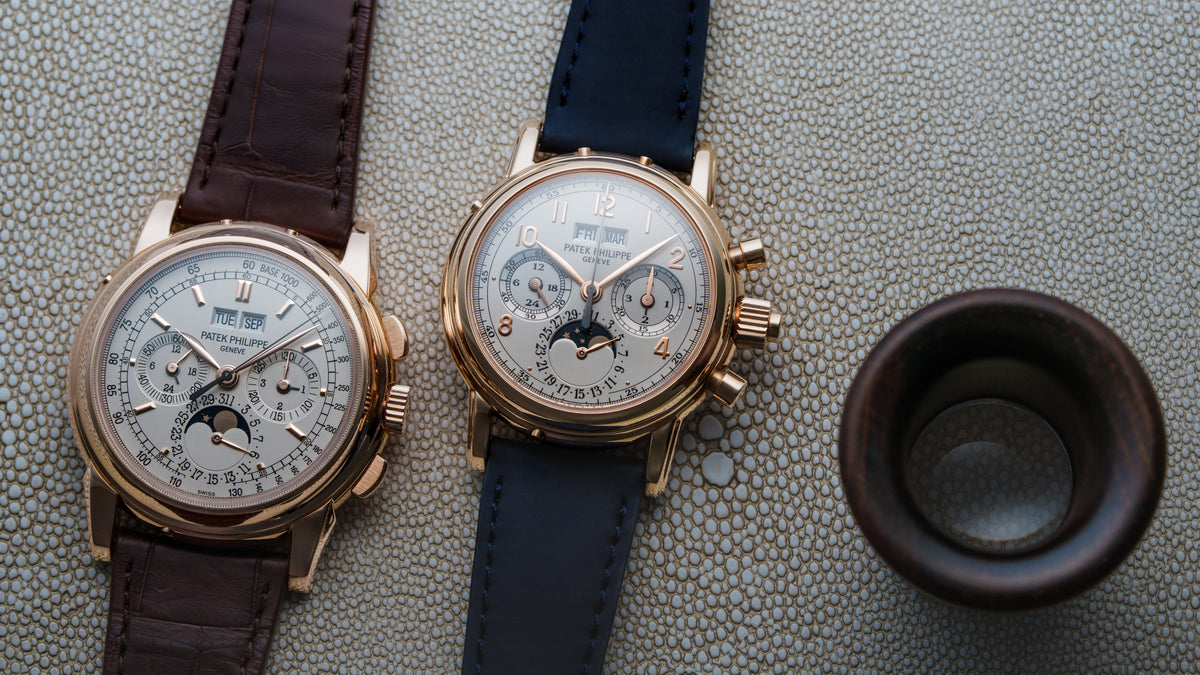
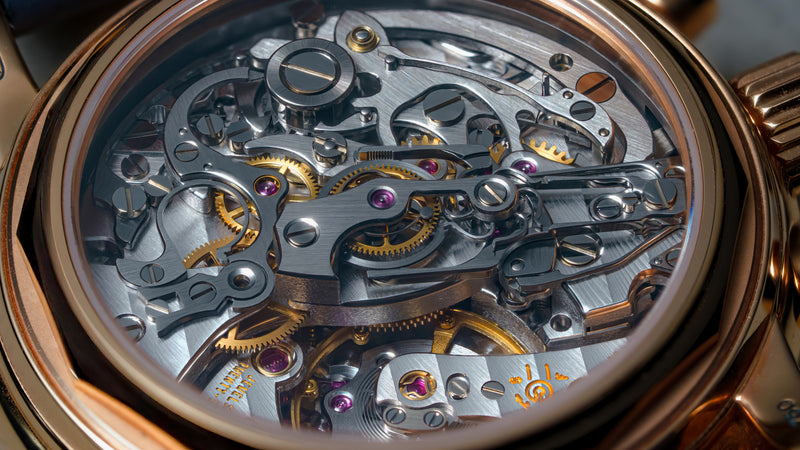
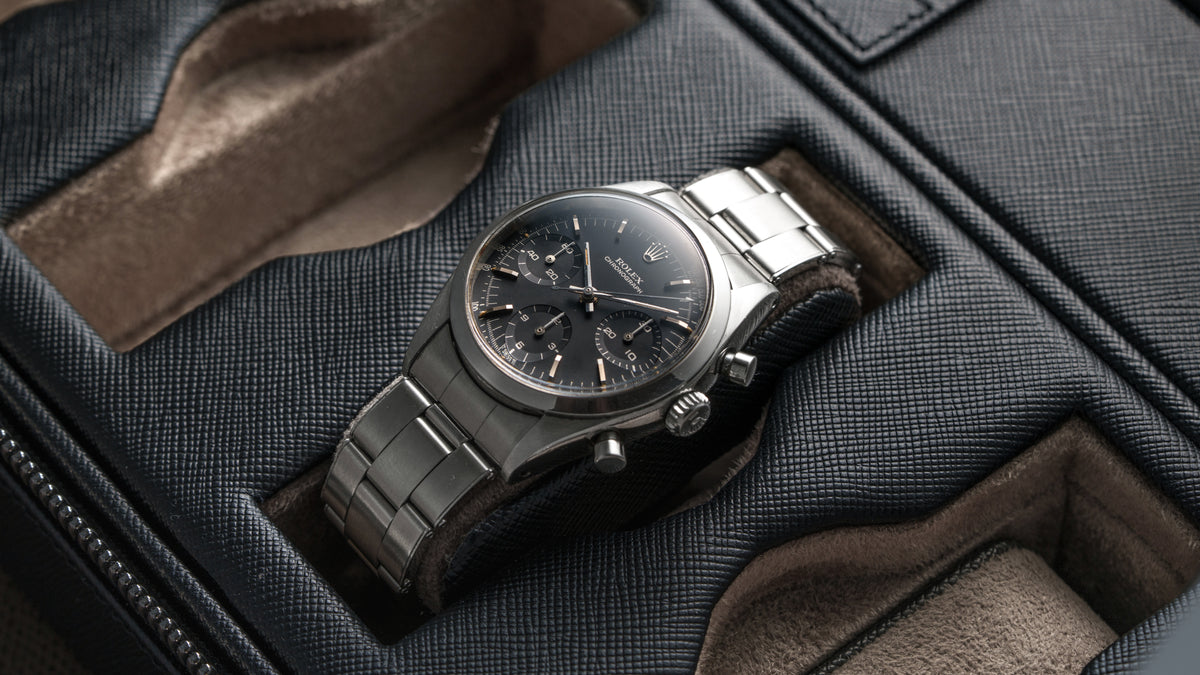
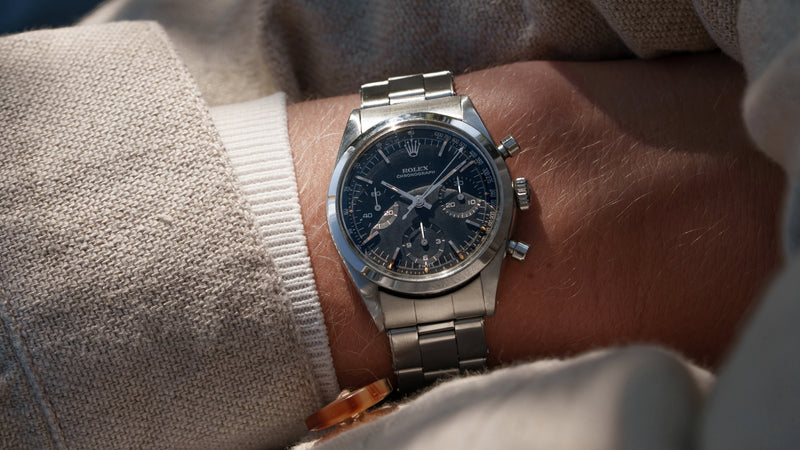







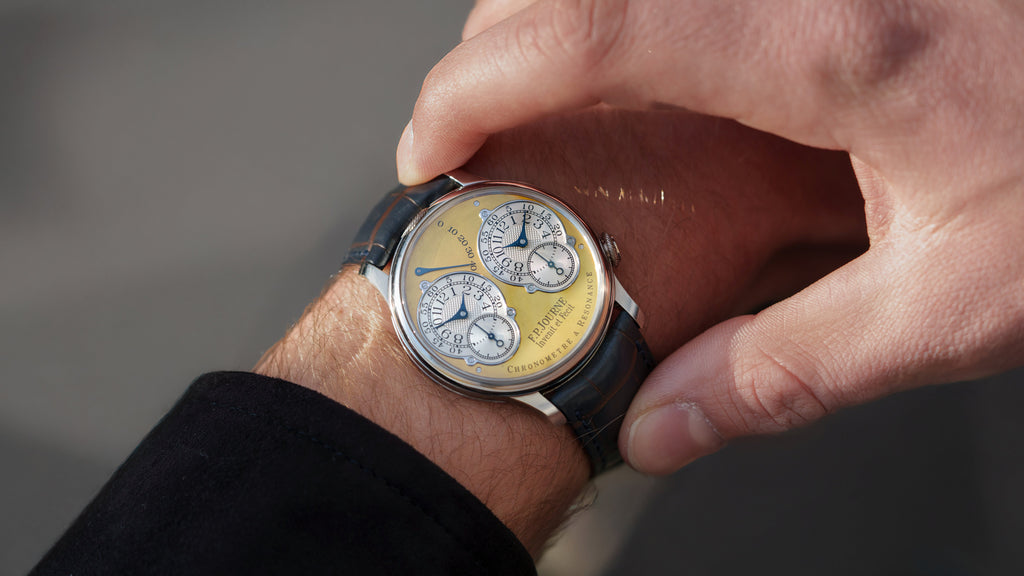
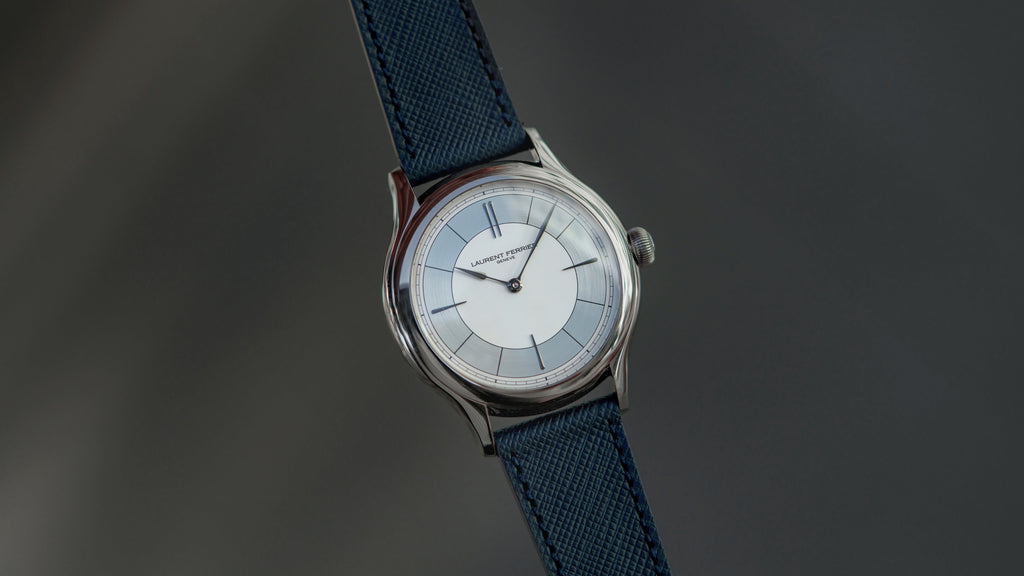

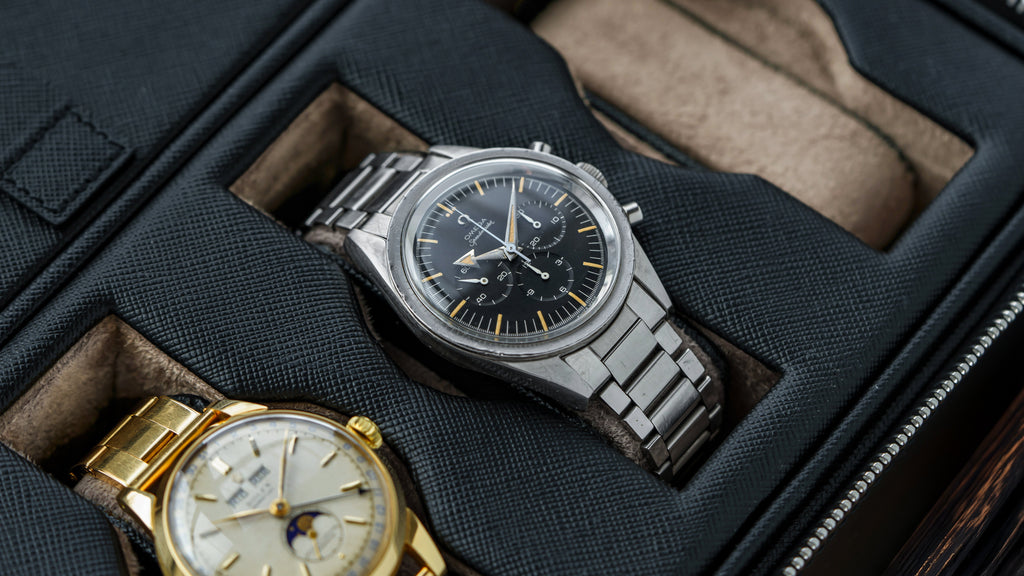
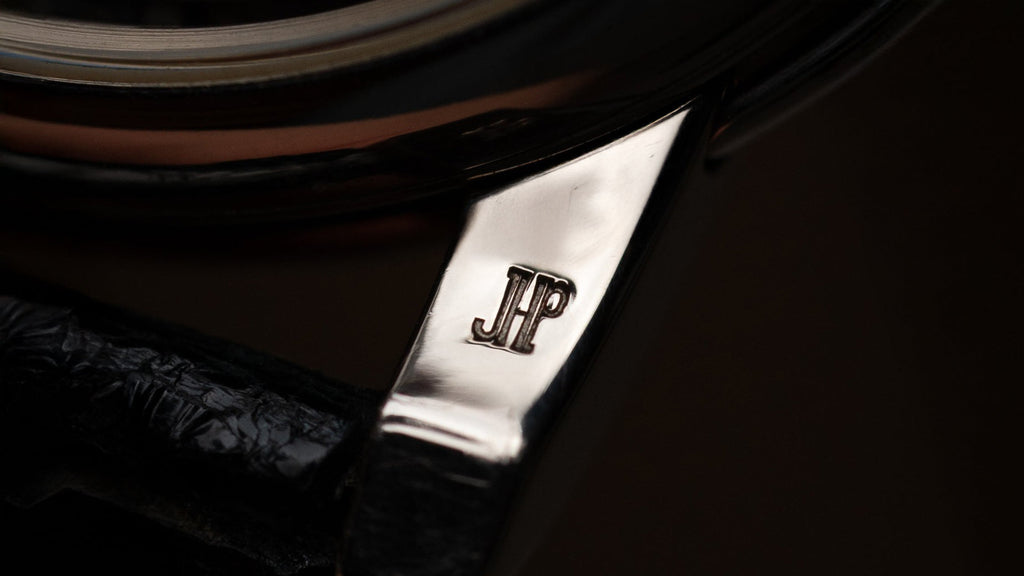
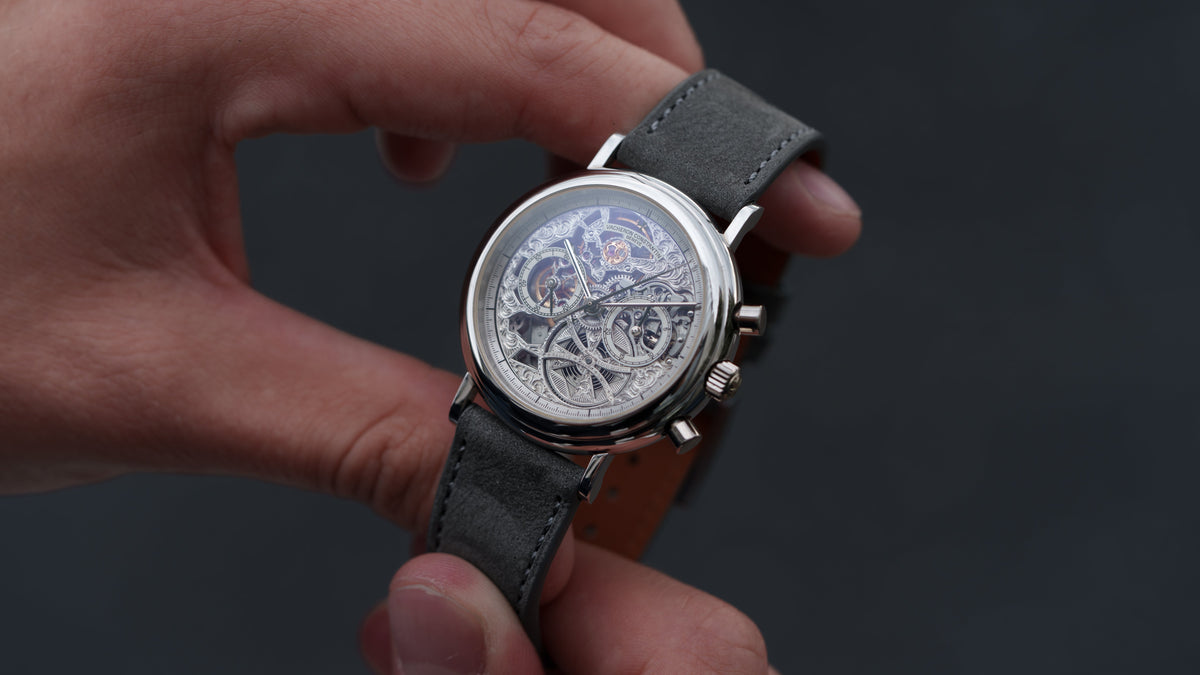
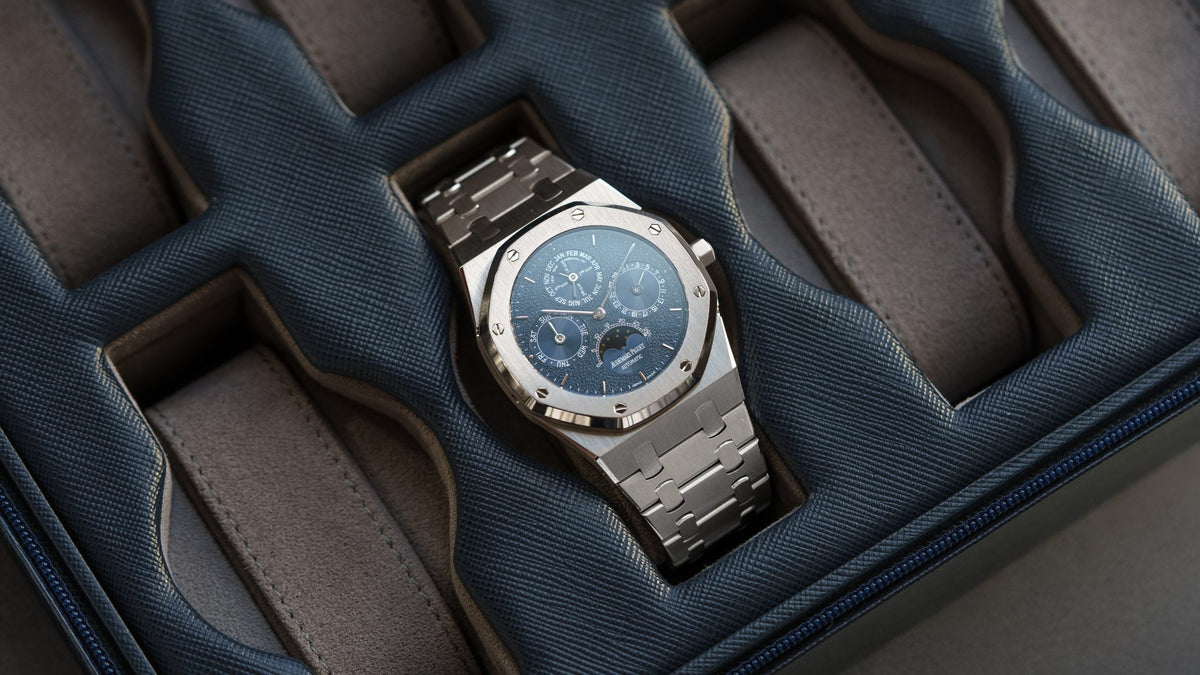
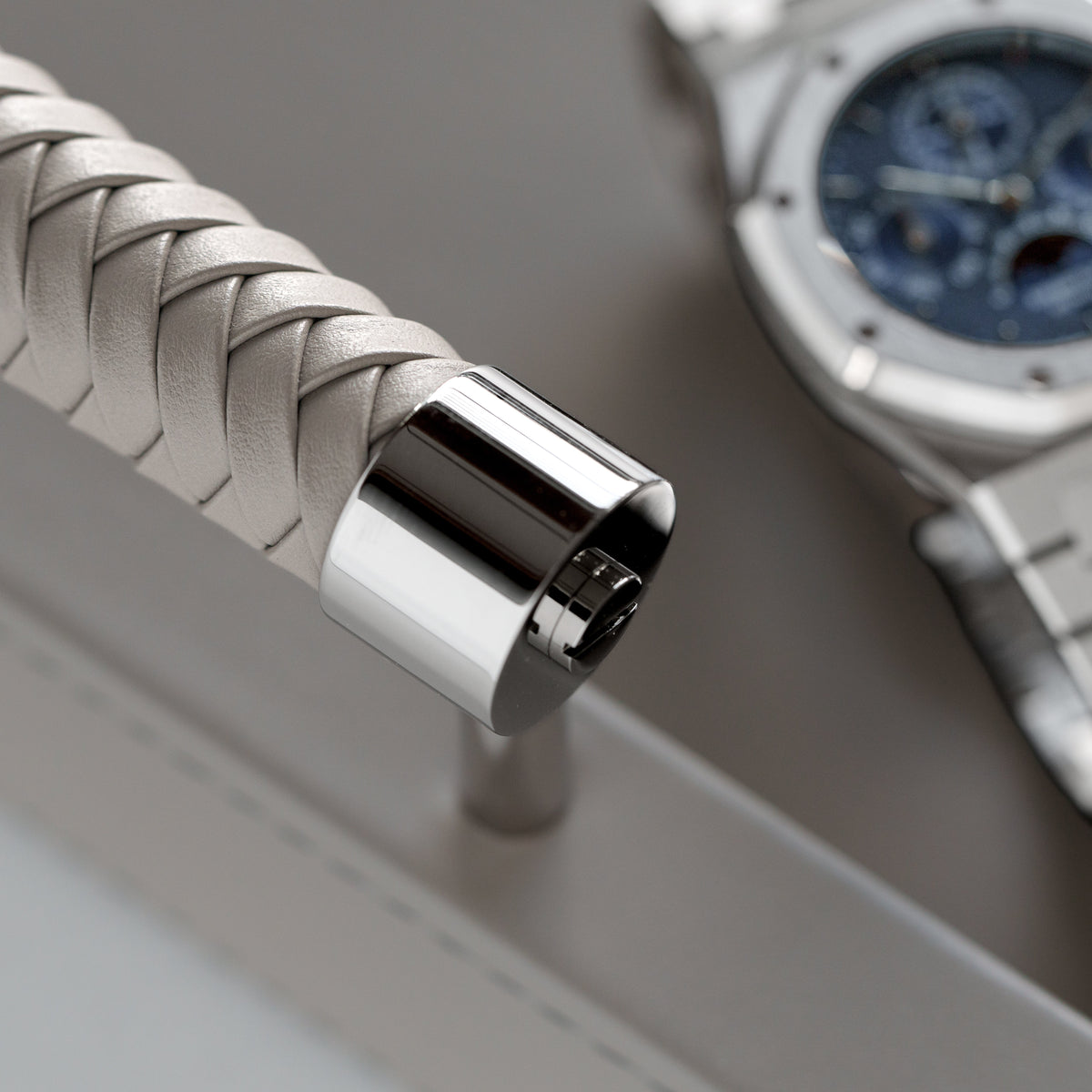
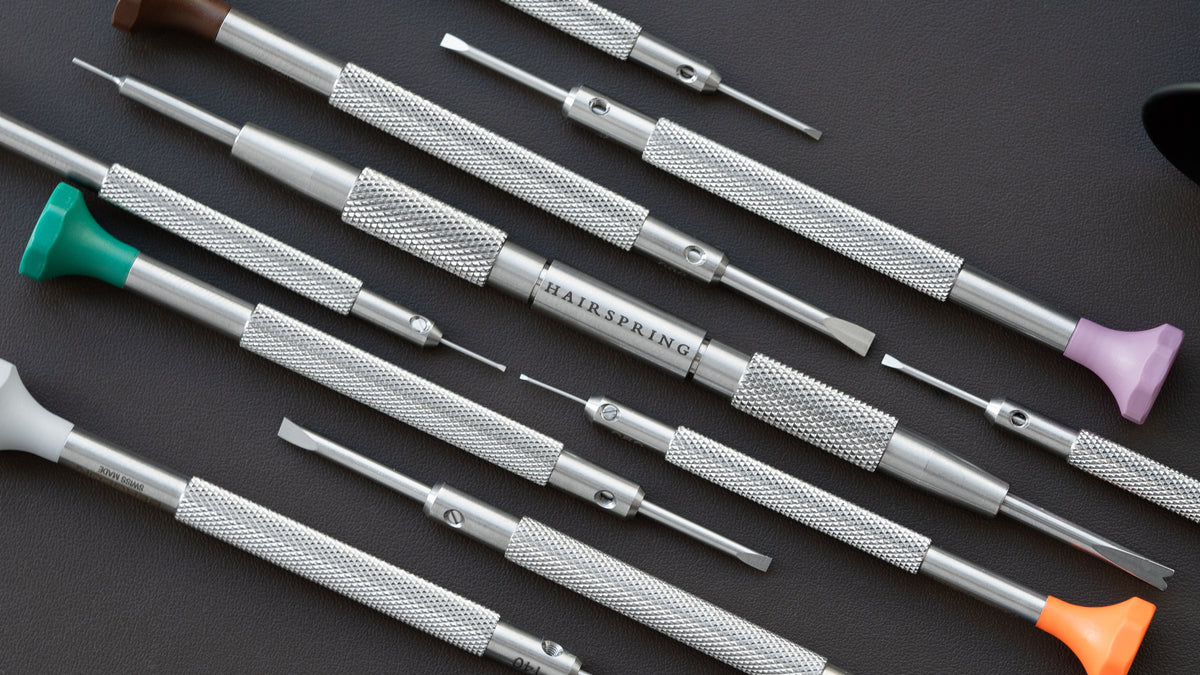
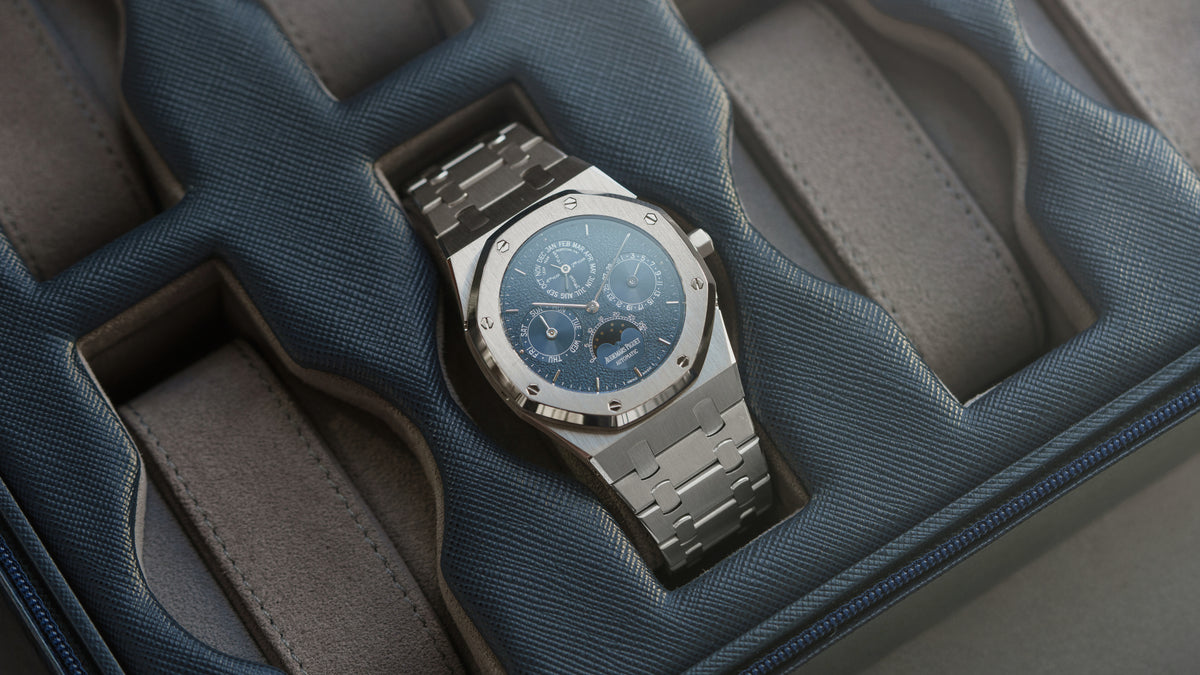
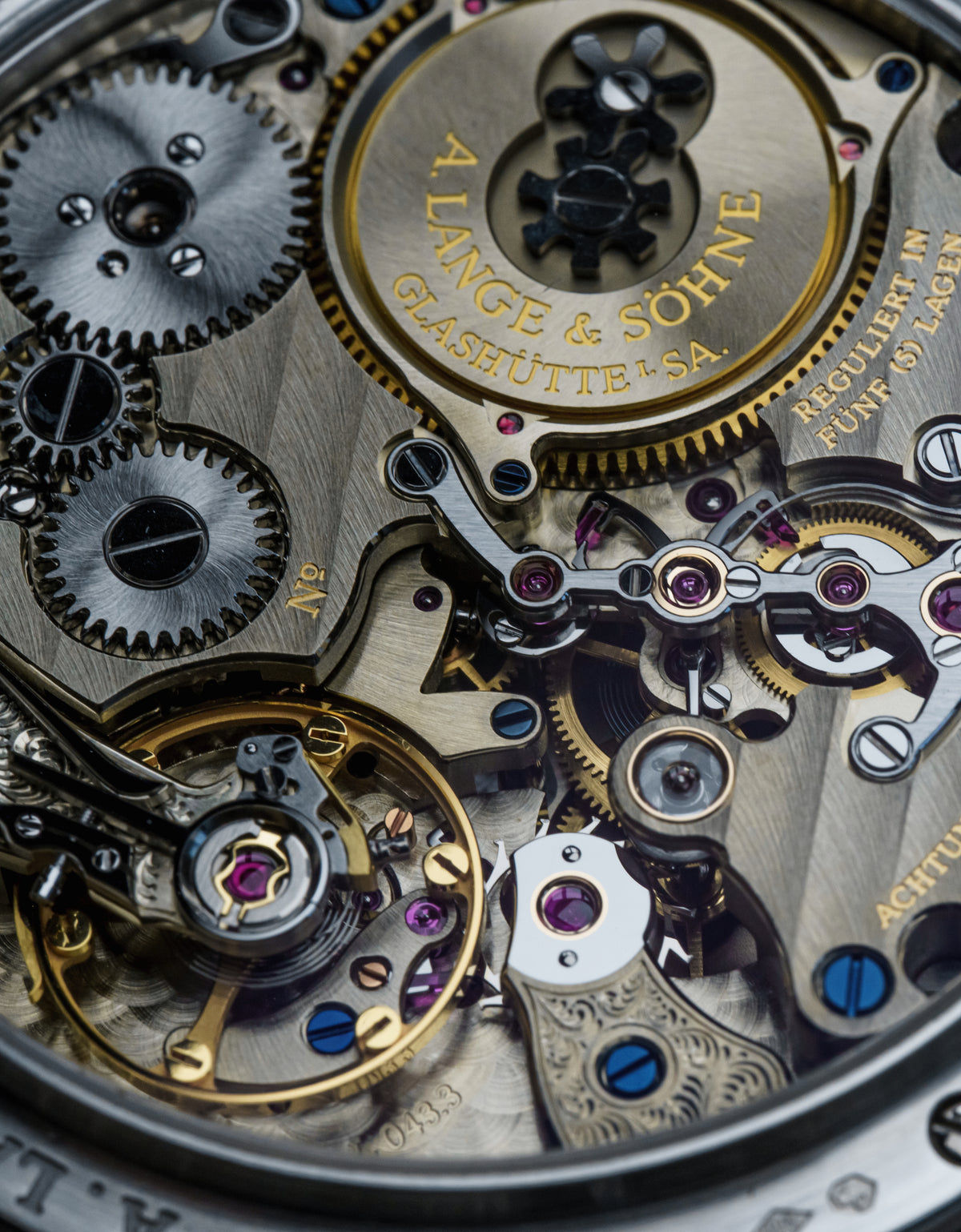

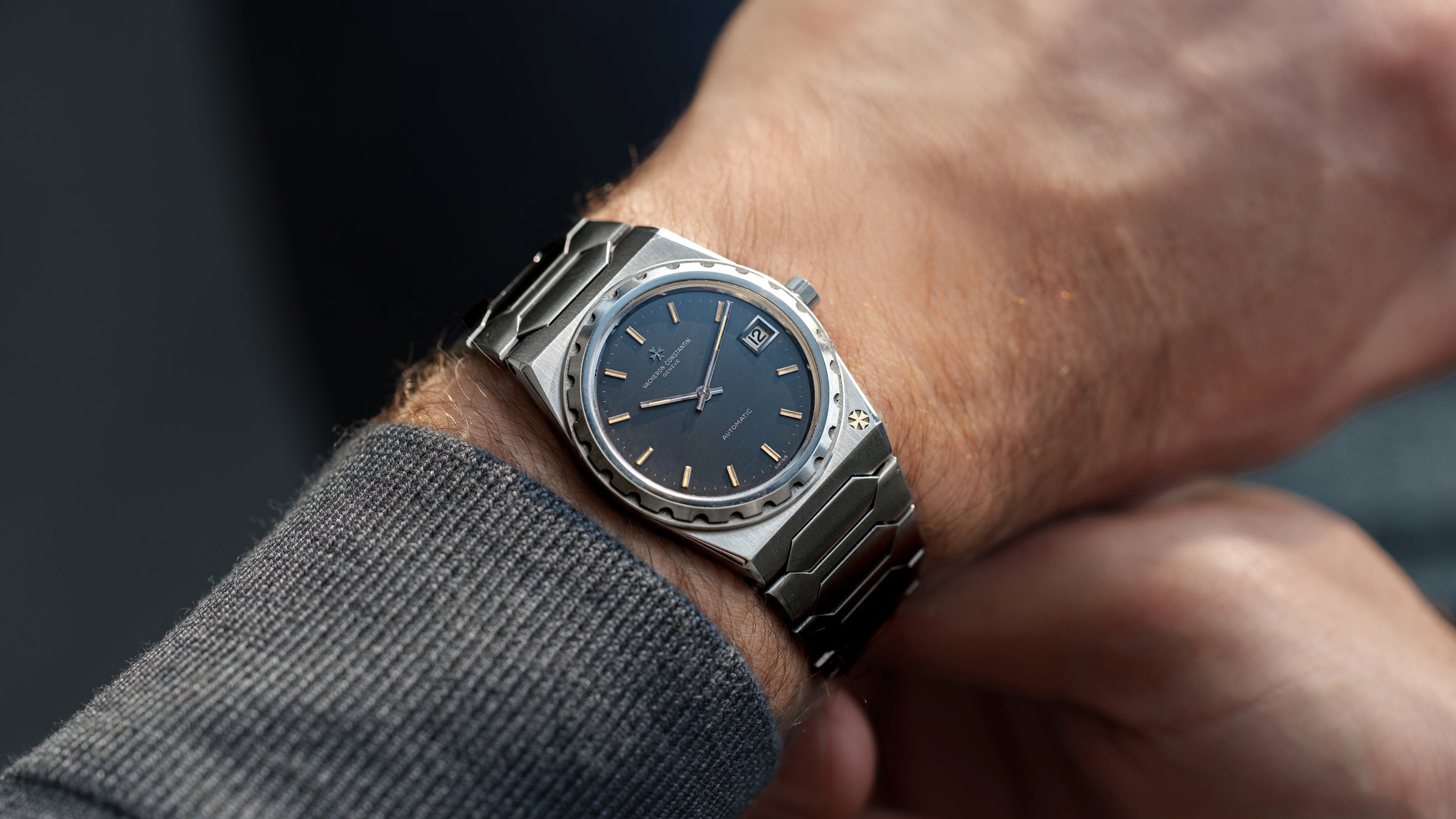
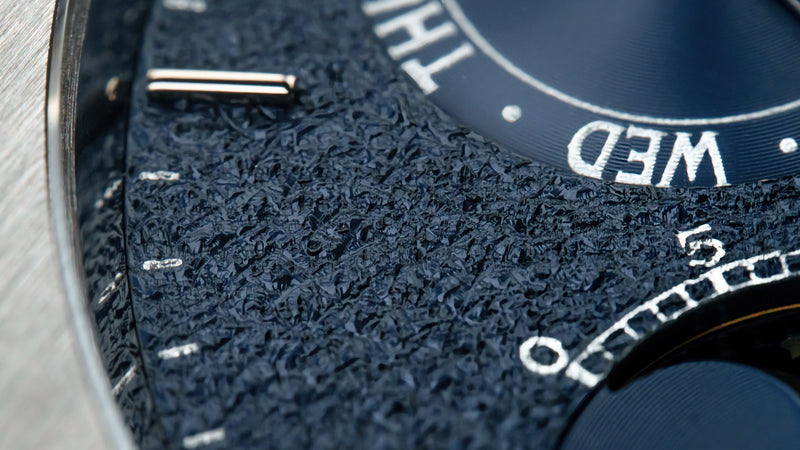

0 comments
Write a Comment